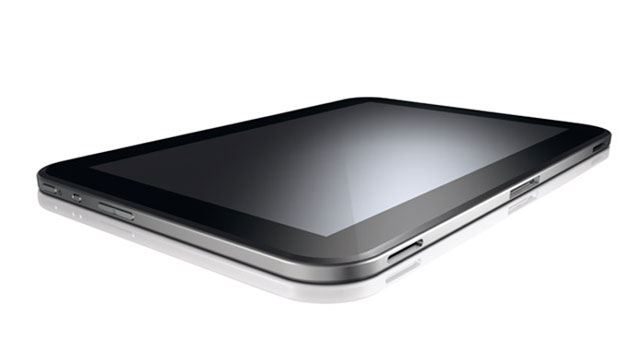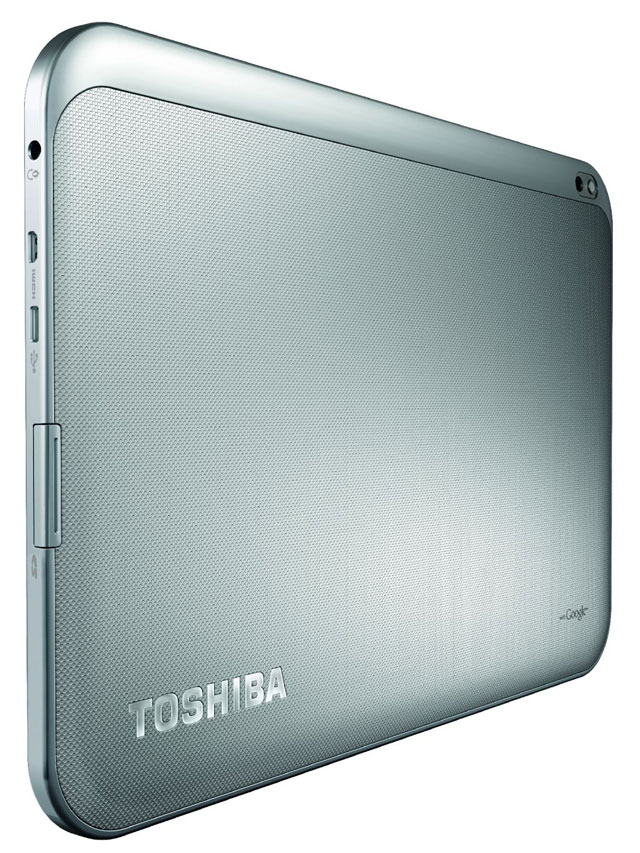
Android-powered tablet computers are getting better with each generation, and Toshiba’s are no exception. The AT300, also known as the Excite 10, improves on the uninspiring Thrive range that preceded it but this still feels like a device that’s trying to catch up with the opposition.
There’s one glaring problem with the Toshiba Excite 10: it’s at least a year too late to market. One of the giveaways is the display. While the 1,5GHz quad-core processor is in keeping with current offerings, the 1 280×800-pixel, 10,1-inch display looks dated. Another is the operating system: it’s running 2011’s flavour of Android, Ice Cream Sandwich.
The AT300’s display is perfectly capable – touch is responsive and the contrast and viewing angles are excellent – but the resolution immediately relegates it to the realm of imitation rather than innovation. The AT300 looks and feels like a first-generation Samsung Galaxy Tab 10.1 or an iPad 2.
In its defence, Toshiba has put far more thought into the AT300 than it did into the Thrive. Gone is the awful rubberised rear and edges in favour of a textured aluminium rear and plastic edge. The result is a device that feels more like a considered, serious piece of technology and less like a hastily assembled toy, though the power and volume buttons and the orientation lock switch on the left-hand side still feel somewhat budget-like.
The AT300 includes a micro USB port, micro HDMI port, 3,5mm audio jack, a full-sized SD card slot – it supports cards up to 32GB cards – and, tragically, a proprietary charging port that takes a ghastly cable reminiscent of Apple’s 30-pin connector, except much bigger.
Quibbles with the hardware aside, the AT300 is really excellent in operation. There’s still the feeling that Android isn’t quite as mature and cohesive an operating system for tablets as it is for smartphones, but that’s not Toshiba’s fault.
From browsing to watching video or switching between multiple applications, the AT300 does what it’s told to, immediately. The only time we experienced any lag was when switching between camera modes, but given the AT300 offers only a humdrum 5-megapixel shooter, hopefully users won’t be spending too much time holding their tablets aloft anyway.

If you’re looking for a tablet that also happens to shoot decent stills and video, you’re going to want to give the AT300 a wide berth. The images it produces are as soft and pixellated as the colours are muted. Video shooting is similarly disappointing.
Though the AT300 offers Wi-Fi — the b, g and n variants — there’s no cellular-powered model available. For those with regular access to Wi-Fi, this may not be a problem. But in the South African context, where few people have fixed lines, it’s likely to crimp sales.
Having two built-in speakers makes for marginally better sound than single-speaker competitors, but you’re still going to want headphones if you’re planning to use the device as a media consumption tool. With excellent battery life of around eight or nine hours, the AT300 is well-suited to the task.
Toshiba’s tablets are getting better, but they’re still lacking the innovation needed to stand a chance against the star of the Android show, Samsung. Moreover, all other manufacturers’ tablets are improving, too, making stand-out features increasingly important in a crowded market.
The AT300 isn’t terrible — it’s just dull. It’s available in 16GB and 32GB models priced at R5 499 and R5 999 respectively. If we were out to spend that much on a tablet, we’d be inclined to splash out a little more for a machine from one of the race leaders. — (c) 2013 NewsCentral Media




